Guitar tops can be made from many different tonewoods, but the guitars most associated with bluegrass flatpicking have spruce tops.
Spend enough time among flatpickers, and you’ll soon learn that everyone has an opinion about what type of spruce is best. The two most hotly debated soundboard spruces are Sitka and Adirondack spruce.
Either species makes an excellent tonewood. They are both stiff yet lightweight, making for guitar soundboards that are strong and resonant.
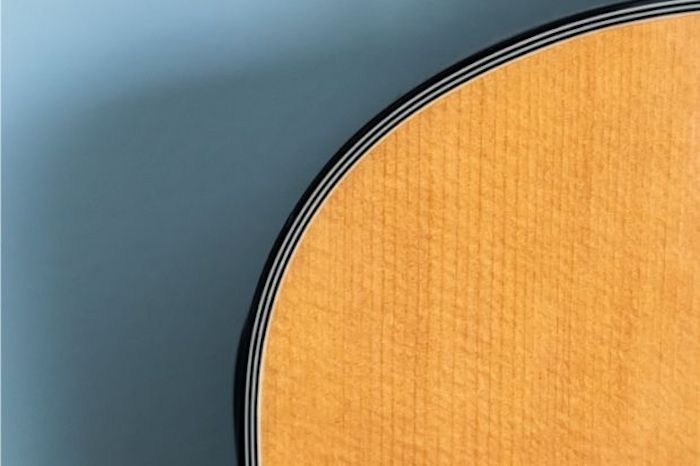
Sitka spruce is by far the most common acoustic guitar top wood, but Adirondack spruce has the bigger reputation because it famously topped the pre-war guitars of the Martin Guitar Company’s golden age in the 1930s and ’40s.
So much of the species was harvested that it became scarce, and Martin had to switch to Sitka spruce for several decades after the Second World War. Adirondack-topped guitars became something of a rarity. Now, however, second-growth Adirondack spruce has matured and is being harvested for lutherie once again.
That leaves you in a tough spot if you’re trying to decide on a guitar. Those two pieces of wood that make up your soundboard are going to be with you a long time.
Read on and I’ll let you know all about the qualities of Sitka vs. Adirondack spruce.
The trees
More than 40 species of spruce tree grow in the wild. They vary greatly in appearance and characteristics. What they generally have in common are evergreen needles, a more-or-less conical profile, and cones that grow on their branches.
Sitka and Adirondack spruce are among the largest species of spruce.

Sitka spruce
Sitka spruce (Picea sithensis) grows abundantly from California to Alaska and is in fact the official state tree of Alaska.
Sitkas can grow over 300 feet. The so-called Carmanah Giant, located in the Carmanah Valley on the west coast of Vancouver Island, measures 314 feet and is believed to be the tallest Sitka in the world. Stand a football field on one end and you get the idea.
As we’ve said, Sitka is the most common tonewood for guitar tops—partly because of its ideal properties but also because of its relative abundance.
Adirondack spruce
Adirondack spruce (Picea rubens) grows in Eastern Canada and the northeast U.S. The name comes from the Adirondack mountains in upstate New York, where it grows abundantly. Guitar players often just call it “Adi,” which is short for Adirondack.
You might also hear it referred to as “Appalachian spruce,” although the Appalachians are technically a separate mountain range further south where the species also grows.
Yet another name for Adirondack spruce is “red spruce,” a name that it takes from the rusty color of its bark.
Whatever you call it, it’s a smaller tree than the Sitka, typically growing between 60 and 130 feet.
Differences between Sitka and Adirondack spruce tops
When it comes to guitar tops, these are the most notable differences between Sitka and Adirondack spruce:
Appearance
Sitka spruce is known for its tight grain. When you look at the vertical lines running lengthwise along a Sitka guitar top, they are narrow and close together.
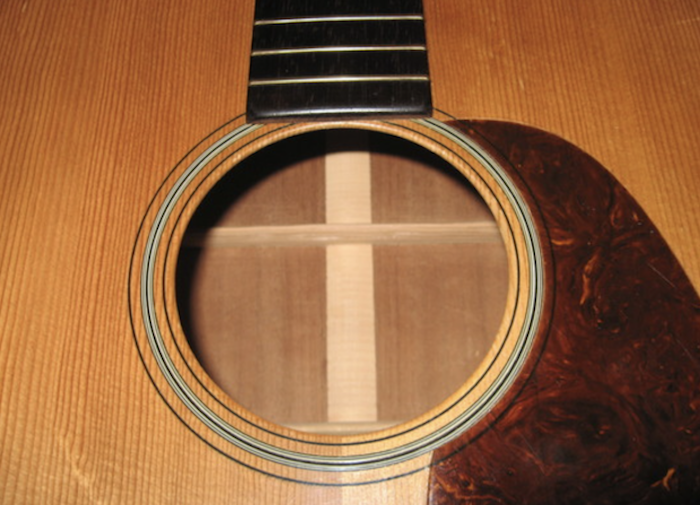
You might see this tight grain on a vintage Adirondack-topped guitar as well, but modern Adirondack spruce tops tend to have a wider grain.
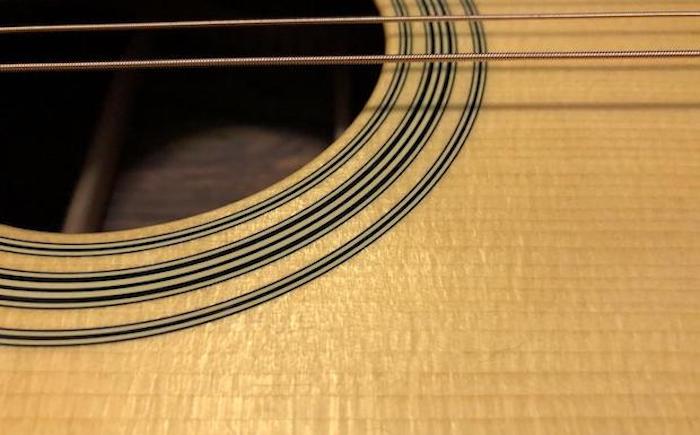
Guitarists seldom agree on whether the width of the grain affects the tone of an instrument, but the general consensus is that the tighter grain looks better. Chalk up a point for Sitka.
Time to open up
Solid wood acoustic guitars seldom sound their best when they are young. Guitars sound better with age, because the fibers within the wood take time to develop their flex as the guitar is played and the string vibrations are transferred to the soundboard.
In most cases, Sitka spruce will reach its full potential more quickly than Adirondack spruce, because Adirondack is stiffer.
Many guitarists speak of Adirondack spruce in reverential tones. This can lead to disappointment if you grab a new Adirondack-topped guitar off the wall at the shop and play it. You might think: “What’s the big deal?”
But that new Adirondack top has a long way to go before it sounds its best. Maybe even decades.
Make no mistake, Sitka needs some time to break in as well, but not nearly as long as Adirondack and the improvement over time is seldom as dramatic.
Volume ceiling
Are you familiar with the concept of “headroom” when it comes to guitars? Usually this refers to amplifiers, and how loud you can crank them before the sound begins to distort. An amp that remains clear even when playing loud is said to have plenty of headroom.
Acoustic guitars have headroom, too. And the soundboard tonewood with the most headroom is Adirondack spruce. Adirondack spruce will give you clear, well-defined, ringing tones no matter how hard you play it.
That’s not always the case with Sitka. Sitka compresses more than Adirondack, so its volume eventually tops out no matter how hard you pick. You reach a point of diminishing returns as you play harder.
A good Sitka top can still get pretty loud before it loses anything, but generally speaking, an Adirondack top will reward aggressive playing more than a Sitka top will.
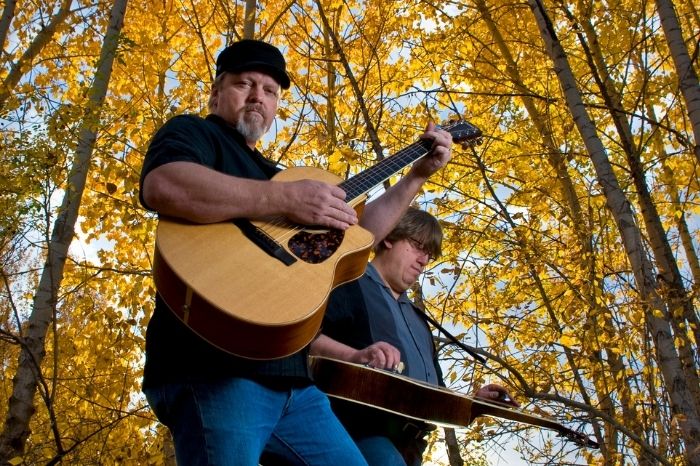
Responsiveness
I think of responsiveness as the speed at which sound gets out of the guitar and into the ears of the audience after the strings are picked. Some players call this velocity of sound.
Adirondack spruce tops produce the greatest velocity of sound. It must be something to do with the extra stiffness.
It takes a pretty sophisticated ear to detect differences in the responsiveness of guitars, but if you need that feedback of hearing what you’re playing as soon as you play it, an Adi top will provide it slightly more instantaneously.
Tonal properties
The tonal properties of both Sitka and Adirondack spruce evolve as a guitar ages, but I’ll try to make some generalizations here.
Think of Sitka as warm and fuzzy. Think of Adirondack as clear and ringing.
Fundamental vs. overtones
Sitka spruce tops tend to lay bare the fundamental notes that you’re playing on the strings. What you play is what you get. Strike a G chord and you’ll hear a G, D, B. Not much else.
Adirondack spruce tends to produce more overtones, making for a more complex, nuanced sound. If you strike that same G chord on an Adi guitar and then listen carefully, it’s still a G chord but there seems to be a lot more going on.
A lot of online videos use duelling guitars to try to demonstrate this, but I don’t think any of them do it as well as this comparison video from Maury’s Music:
Did you hear the difference?
Versatility
It might seem as though I’m favoring Adirondack spruce here, but that’s not the intention. In fact, I would give the edge to Sitka if versatility is what you’re after.
Sure, Adirondack is great for bluegrass pickers who want to play hard enough to be heard over mandolins and banjos, but if you intend to take your guitar home after the jam and play a little fingerstyle on the couch, you’ll do better with Sitka. If you play softly, it’s difficult to get the most out of Adirondack.
Sitka is also suitable for more styles of music. It’s a great all-around top wood.
Price
Adirondack spruce costs more. That’s just how it is. A guitar with an Adirondack spruce top will carry a bigger price tag than the same guitar with a Sitka spruce top.
For example, as I write this, the website for Maury’s Music is offering Martin D-18s that are identical except for the Adirondack vs. Sitka spruce tops. The difference in list price is $789, or 31.6 per cent.
Is Adirondack better than Sitka?
Don’t let the big price tag fool you. Adirondack spruce doesn’t cost more than Sitka spruce because it’s better, it costs more because it’s harder to get. Sitka spruce is abundant, and anything that is easily supplied tends to cost less. By no means does that make it an inferior tonewood.
Remember, the beauty of a musical instrument is in the ear of the beholder. Some people prefer the sound of Adirondack tops. Others prefer Sitka tops. I happen to like those big fundamental notes of Sitka, while others prefer the lushness of Adirondack.
My hope is that by reading this piece, you understand a little bit more about what you’re getting into with either tonewood, and that will help you make the choice about what you’re going to like.
Top wood is only one variable
The final thing to keep in mind is that the tonewood used for a guitar’s soundboard is just one small piece of an intricate puzzle that ultimately produces the guitar’s sound.
The guitar’s back and sides are going to be a different tonewood altogether. How will the spruce play with them? Different spruces go better with different backs and sides.
The luthier is certainly more important than the tonewood. Most players would gladly take their second-choice tonewood on a guitar build that nails everything else, ahead of their first-choice tonewood on a guitar that misses the mark in other areas.
Trust me, you can find magical guitars that use either tonewood, and you can also find duds.
The best thing you can do is get out there and start playing guitars. Play Adirondack tops. Play Sitka tops. Get to know a lot of them. It will soon become clear to you which one you prefer.
And one day, you’ll walk into a shop to choose a guitar, and a guitar will end up choosing you instead. That’s how it ought to happen.

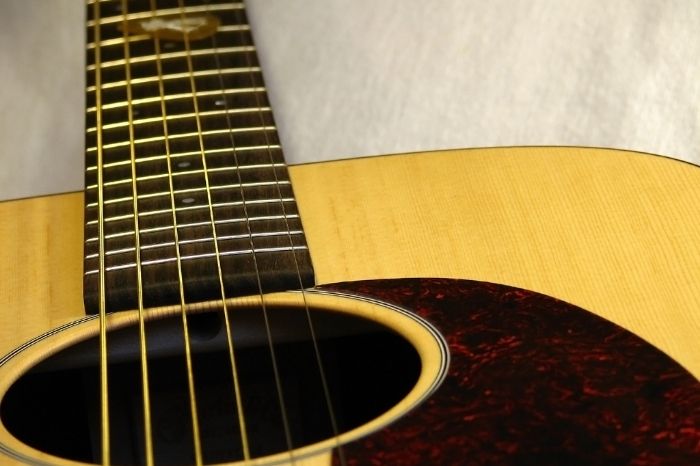
This is an outstanding review and comparison. Thanks for putting the time in to lay this all out. I think only the better players can actually hear the differences right off the hop. But for the rest of us it gives us something to think about. The more you learn, the better you’ll hear. In a way, it’s like tasting wines. When someone tells you what to look for, it’s easier to find it. Thanks again.
Glad you found it helpful, Steve!
Really nicely written. I have two Adirondack topped guitars (Eastman dreadnaught and Blueridge 000) and I think I prefer that tonewood?
Great article! You left no stone unturned. You answered every question I had without droning on and on.
Thanks for this. It addresses directly something that I’m thinking about right now. I have never played a guitar with an Adirondack top, but I am interested in the Recording King RO-328 which has an Adirondack top. At 66, I don’t have decades to wait for the top to open up. But reviewers say that the wood was aged for 30 years. You may have never heard this particular guitar, but I’m wondering whether you think a pre-manufacturing aging process would open up the wood the same way as playing it for a long time would. (I would be buying one of these without being able to hear it first because no one carries them around here.)
I do not think it would open up the wood the same way, because the wood fibers would not be flexing in the way they do when the top vibrates. That doesn’t mean it won’t help at all, though. If the blanks for the top have been sitting in the shop (or in storage) for 30 years, then they have done some natural drying and should be better than something that was recently cut from the tree. They’ll still need to “open up” once you get playing, but my guess is they will reach the desired sound more quickly.
I’ve never seen technical proof that SOUND opens up wood rather than time … just anecdotal or statements of what people believe. From what I know of wood and trees as an arborist and reading, I suspect time exposed to temperature and chemical changes sitting probably accounts for 99% of the aging.
I don’t think sound flexes wood either. It’s vibration. And even wood in storage or on a tree has sound vibrating it from voice, birds, banging, etc.. Playing a guitar is not the only source of sound coming at wood. And if sound flexed wood, then playing a radio with music in storage would improve the aging better. But I don’t think that’s the case in reality.
If these are both new out of the box guitars I question if this is a true “apples to apples” comparison since the Adi takes longer to open up.
Absolutely right. You’ll probably need more patience with Adi but the wait can be very worthwhile.
Thanks for the great explanation!
I still have one question left.. Since a couple of months i have a Gibson J45 with an Adirondack Spruce top, about 10 years old, sometimes when i pick it up it sounds weirdly dull. Lately i heard an expert saying that some guitars with Adirondack tops need to be played for a while before they start to deliver after they were untouched for a couple of days. Since i discovered that mine tonally really becomes a different instrument after about 30 minutes of playing, very crisp, powerful, brilliant, even when picked up sounding dull.
Have you ever heard of something like this or is that rather a myth?
Thanks
Dario
I’ve certainly heard this about guitars that have been put away for months, and I can believe it. A few days seems awfully short for a guitar to fall asleep, but believe your ears! I don’t think its illogical that wood fibers might take time to warm up.
This is a common phenomenon that I and several other players I have known have experienced with adi topped guitars. I have experienced it with my archtops more than my dreads and 000. This is also what the other players have experienced too. It’s interesting to note that this is true of not only modern builds but even in pre-war instruments. What I do know, is that even when they don’t seem “up to snuff”, they are still way better than comparable sitka or carpathian tops.
Thank you for taking time on your R&D. I own the 0-18 that has the Sitka Spruce top and I own the new 000-16 streetmaster that has the VTS Adirondack Spruce top. There is a big difference in tonal palette of colours, harmonics, sustain and flavors from each guitar. I do use persimmon bridge pins that I bought from Maury’s Music.com on the 0-18 and real ebony wood bridge pins bought from Maury’s Music.com. I did take both guitar’s to my luthier Geoff Vella. Geoff@vellarepair.com in Landing, NJ. He replaced the bleached bone nut and saddle to an unbleached bone nut and saddle because the unbleached bone has a more fuller sound. I prefer the more fuller sound of unbleached bone. I do enjoy both guitar’s playing classical music, Baroque, romantic like JS Bach, Beethoven, Mozart. But also 000-16 streetmaster is awesome for strumming I use 1.0 mm or 1.14 mm picks. Adirondack Spruce top with VTS aging the guitar sounds like it’s been played for 80 years. As far as the Dovetail construction on both guitar’s 0-18 is by hand and 000-16 Streetmaster Dovetail is done by CNC machine which drastically reduce the cost of the guitar. This was explained by C.F.Martin in Nazareth, PA. But both are tight fitting Dovetail construction joints. One has white binding & pick guard, hardshell case. Other has soft shell case, no pick guard and no white binding. Both have scalloped bracing. Again thank you for your knowledge on both Sitka Spruce and Adirondack Spruce.
Great job! I’ve recently acquired a new Martin d18 with forward shifted scalloped bracing , sounds awesome for a new guitar, I’ve own a Collings HD2A which took several years to open up but wow!, thinking about buying a D18 with an adi top, Thanks.
Great review, folks really appreciate someone taking the time to do it right so folks like me can get a better understanding between the two. Thanks Much! I love Adi but in this case I favored the Sika.
I’ve been trying to confirm my view that the 1946 Martin 0-21 I Have is Adi. Early 1946 (so it’s unclear). I’ll be honest, I wanted it to be because it sounded cooler. Yuck.
But your brilliant review left me thinking and experimenting, from a position of actually being informed.
When I described the tone of my 0-21 in ‘Spinal Tap’ terms – rings out forever…and the harder you hit it, the clearer it gets! and also compared it to a 2001 Chateau Margaux wine (a tough year that required the makers to really work hard v a chilean merlot), people would laugh and look quizzically at me 😂.
I think it may well be Adi, but now I don’t care because your review helped me put so much more colour on how it feels to play.
Thank you🙏
Ooh, 21s are very cool guitars no matter what the top is. I bet it sounds great!
Great review, it makes it easy to spot the difference. I’ve got a Martin D 28, sitka top, a really nice guitar. I am basically a fingerpicker but I often hit quite hard and miss some dinamic range. I think my next guitar will have an adirondack top.